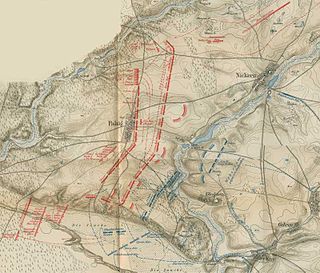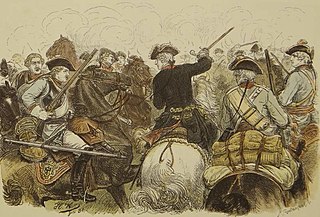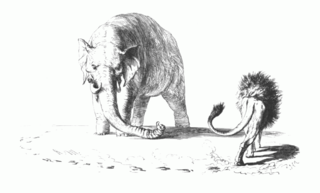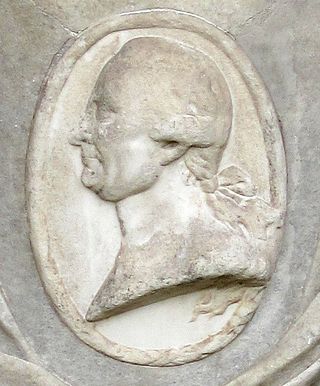
Frederick II was the monarch of Prussia from 1740 until 1786. He was the last Hohenzollern monarch titled King in Prussia, declaring himself King of Prussia after annexing Royal Prussia from the Polish–Lithuanian Commonwealth in 1772. His most significant accomplishments include his military successes in the Silesian wars, his reorganisation of the Prussian Army, the First Partition of Poland, and his patronage of the arts and the Enlightenment. Prussia greatly increased its territories and became a major military power in Europe under his rule. He became known as Frederick the Great and was nicknamed "Old Fritz".

The Pomeranian War was a theatre of the Seven Years' War. The term is used to describe the fighting between Sweden and Prussia between 1757 and 1762 in Swedish Pomerania, Prussian Pomerania, northern Brandenburg and eastern Mecklenburg-Schwerin.

The Kingdom of Prussia constituted the German state of Prussia between 1701 and 1918. It was the driving force behind the unification of Germany in 1866 and was the leading state of the German Empire until its dissolution in 1918. Although it took its name from the region called Prussia, it was based in the Margraviate of Brandenburg. Its capital was Berlin.
The Treaty of Hubertusburg was signed on 15 February 1763 at Hubertusburg Castle by Prussia, Austria and Saxony to end the Third Silesian War. Together with the Treaty of Paris, signed five days earlier, it marked the end of the Seven Years' War. The treaty ended the continental conflict with no significant changes in prewar borders. Austria and Saxony renounced all claims to the Silesian territories ceded to Prussia in the 1742 Treaty of Berlin and the 1745 Treaty of Dresden. Prussia clearly stood among the ranks of the European great powers, while the treaty enhanced the rivalry with Austria.

The Silesian Wars were three wars fought in the mid-18th century between Prussia and Habsburg Austria for control of the Central European region of Silesia. The First (1740–1742) and Second (1744–1745) Silesian Wars formed parts of the wider War of the Austrian Succession, in which Prussia was a member of a coalition seeking territorial gain at Austria's expense. The Third Silesian War (1756–1763) was a theatre of the global Seven Years' War, in which Austria in turn led a coalition of powers aiming to seize Prussian territory.

The Battle of Kay, also referred to as the Battle of Sulechów, Battle of Züllichau, or Battle of Paltzig, was an engagement fought on 23 July 1759 during the Seven Years' War. It occurred near Kay (Kije) in the Neumark, now part of Poland.

The Battle of Kunersdorf occurred on 12 August 1759 near Kunersdorf immediately east of Frankfurt an der Oder. Part of the Third Silesian War and the wider Seven Years' War, the battle involved over 100,000 men. An Allied army commanded by Pyotr Saltykov and Ernst Gideon von Laudon that included 41,000 Russians and 18,500 Austrians defeated Frederick the Great's army of 50,900 Prussians.

The Battle of Maxen was a battle at Maxen, in the Electorate of Saxony during the Third Silesian War. It resulted in surrender of a Prussian corps.

The War of the Fourth Coalition was a war spanning 1806–1807 that saw a multinational coalition fight against Napoleon's French Empire, subsequently being defeated. The main coalition partners were Prussia and Russia with Saxony, Sweden, and Great Britain also contributing. Excluding Prussia, some members of the coalition had previously been fighting France as part of the Third Coalition, and there was no intervening period of general peace. On 9 October 1806, Prussia declared war on France and joined a renewed coalition, fearing the rise in French power after the defeat of Austria and establishment of the French-sponsored Confederation of the Rhine in addition to having learned of French plans to cede Prussian-desired Hanover to Britain in exchange for peace. Prussia and Russia mobilized for a fresh campaign with France, massing troops in Saxony.

The Second Silesian War was a war between Prussia and Austria that lasted from 1744 to 1745 and confirmed Prussia's control of the region of Silesia. The war was fought mainly in Silesia, Bohemia, and Upper Saxony and formed one theatre of the wider War of the Austrian Succession. It was the second of three Silesian Wars fought between Frederick the Great's Prussia and Maria Theresa's Austria in the mid-18th century, all three of which ended in Prussian control of Silesia.

The Royal Prussian Army served as the army of the Kingdom of Prussia. It became vital to the development of Prussia as a European power.

The First Silesian War was a war between Prussia and Austria that lasted from 1740 to 1742 and resulted in Prussia's seizing most of the region of Silesia from Austria. The war was fought mainly in Silesia, Moravia and Bohemia and formed one theatre of the wider War of the Austrian Succession. It was the first of three Silesian Wars fought between Frederick the Great's Prussia and Maria Theresa's Austria in the mid-18th century, all three of which ended in Prussian control of Silesia.

Austria and Prussia were the most powerful states in the Holy Roman Empire by the 18th and 19th centuries and had engaged in a struggle for supremacy among smaller German kingdoms. The rivalry was characterized by major territorial conflicts and economic, cultural, and political aspects. Therefore, the rivalry was an important element of the so-called German question in the 19th century.

The Seven Years' War (1756–1763) was a global conflict involving most of the European great powers, fought primarily in Europe and the Americas. One of the opposing alliances was led by Great Britain and Prussia. The other alliance was led by France, backed by Spain, Saxony, Sweden, and Russia. Related conflicts include the 1754 to 1763 French and Indian War, and 1762 to 1763 Anglo-Spanish War.

The Third Silesian War was a war between Prussia and Austria that lasted from 1756 to 1763 and confirmed Prussia's control of the region of Silesia. The war was fought mainly in Silesia, Bohemia and Upper Saxony and formed one theatre of the Seven Years' War. It was the last of three Silesian Wars fought between Frederick the Great's Prussia and Maria Theresa's Austria in the mid-18th century, all three of which ended in Prussian control of Silesia.

The Raid on Berlin took place in October 1760 during the Third Silesian War when Austrian and Russian forces occupied the Prussian capital of Berlin for several days. After raising money from the city, and with the approach of further Prussian reinforcements, the occupiers withdrew. There were later allegations that the Russian commander Count Tottleben had received a personal bribe from the Prussians to spare the city, and he was subsequently tried and found guilty of being a spy.

Christoph II, Burggraf and Count of Dohna-Schlodien was a Prussian general. He was the son of Christopher I, Burgrave and Count of Dohna-Schlodien (1665–1733). He served in the armies of Frederick William I of Prussia and his son, Frederick II, in the Silesian and Seven Years' wars. He was particularly successful at the Battle of Gross-Jägersdorf, and instrumental in relieving Siege of Kolberg.

Hans Sigismund von Lestwitz was a Prussian major general of the infantry and was especially honored by Frederick II for his action in the Battle of Torgau. His decisive leadership at Torgau, in which he snatched victory from defeat, was credited at the time and subsequently with saving the Prussian state. Frederick acknowledged his action with the post-war gift of vast estates near Kunersdorf.

Johann Dietrich von Hülsen was a Prussian lieutenant general of the infantry. After a lifelong officer's career in various infantry regiments, he acquired the special respect of Frederick II in the Seven Years' War as general, and was honored by him with the appointment as governor of Berlin. During the war, he became a canon to Minden and was awarded the Black Eagle Order and the Order Pour le Mérite. His name appears on the top tier of the Equestrian statue of Frederick the Great.


















